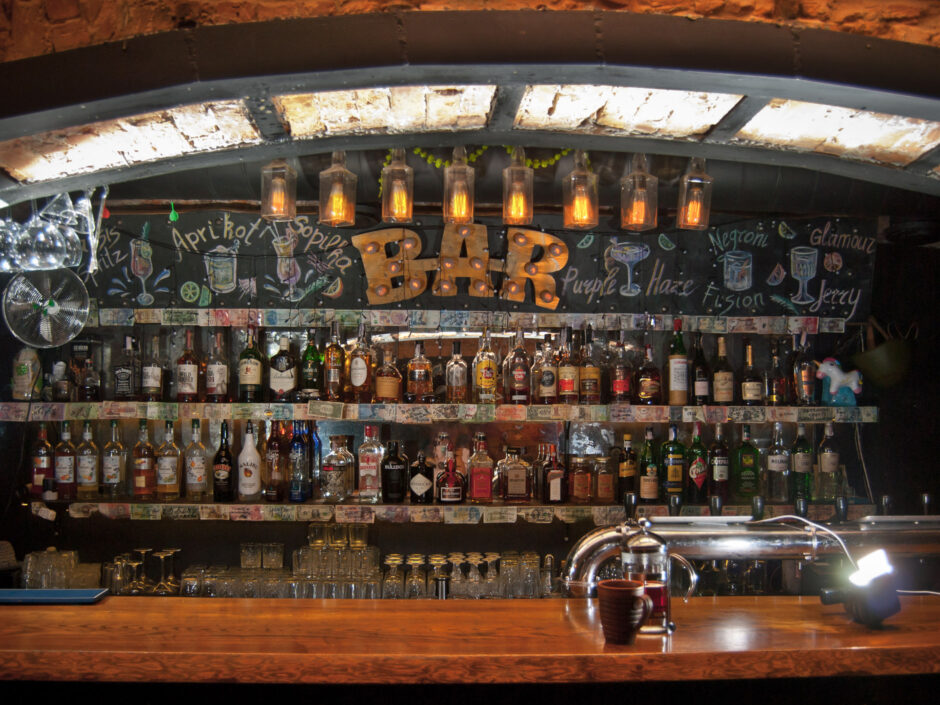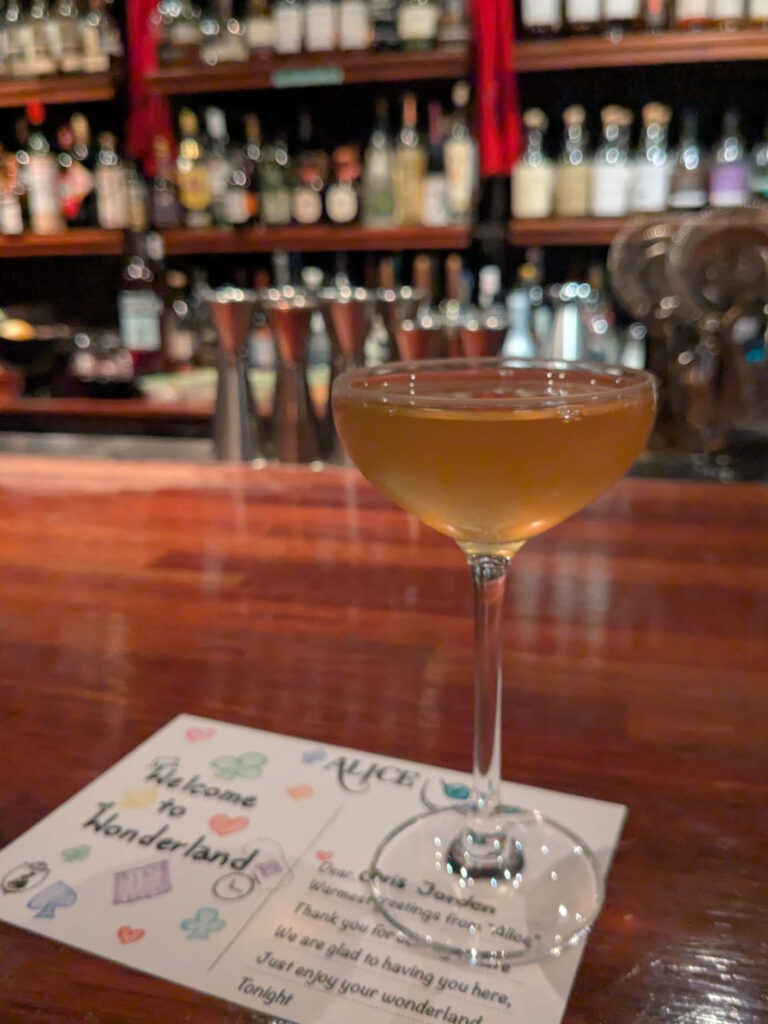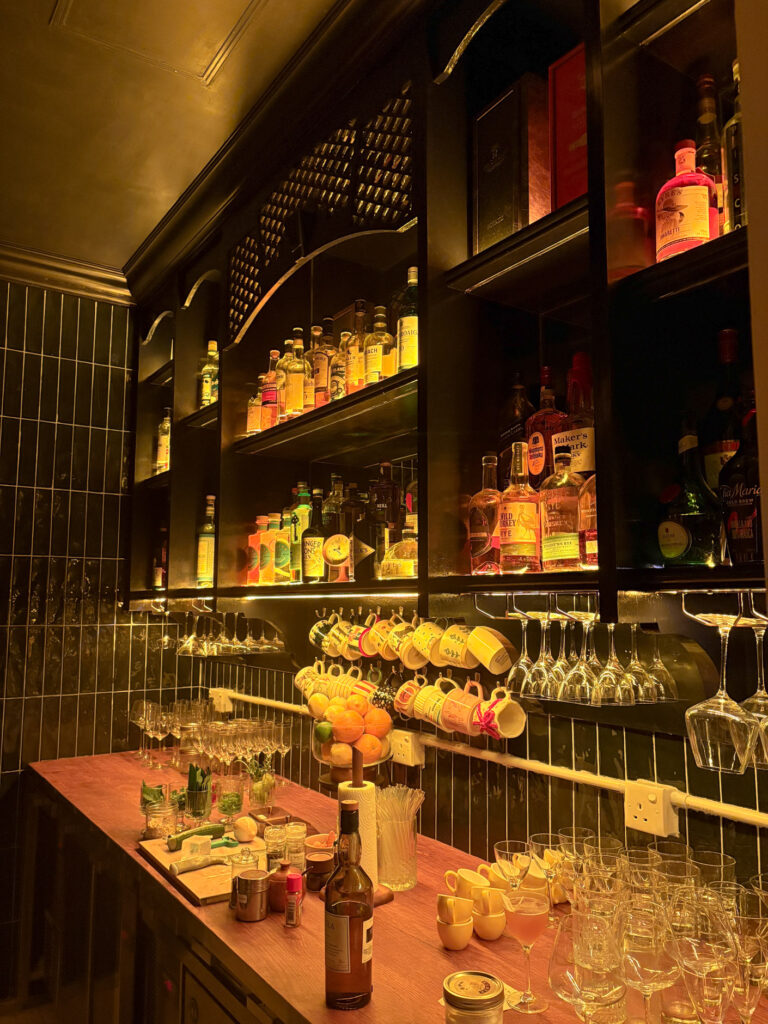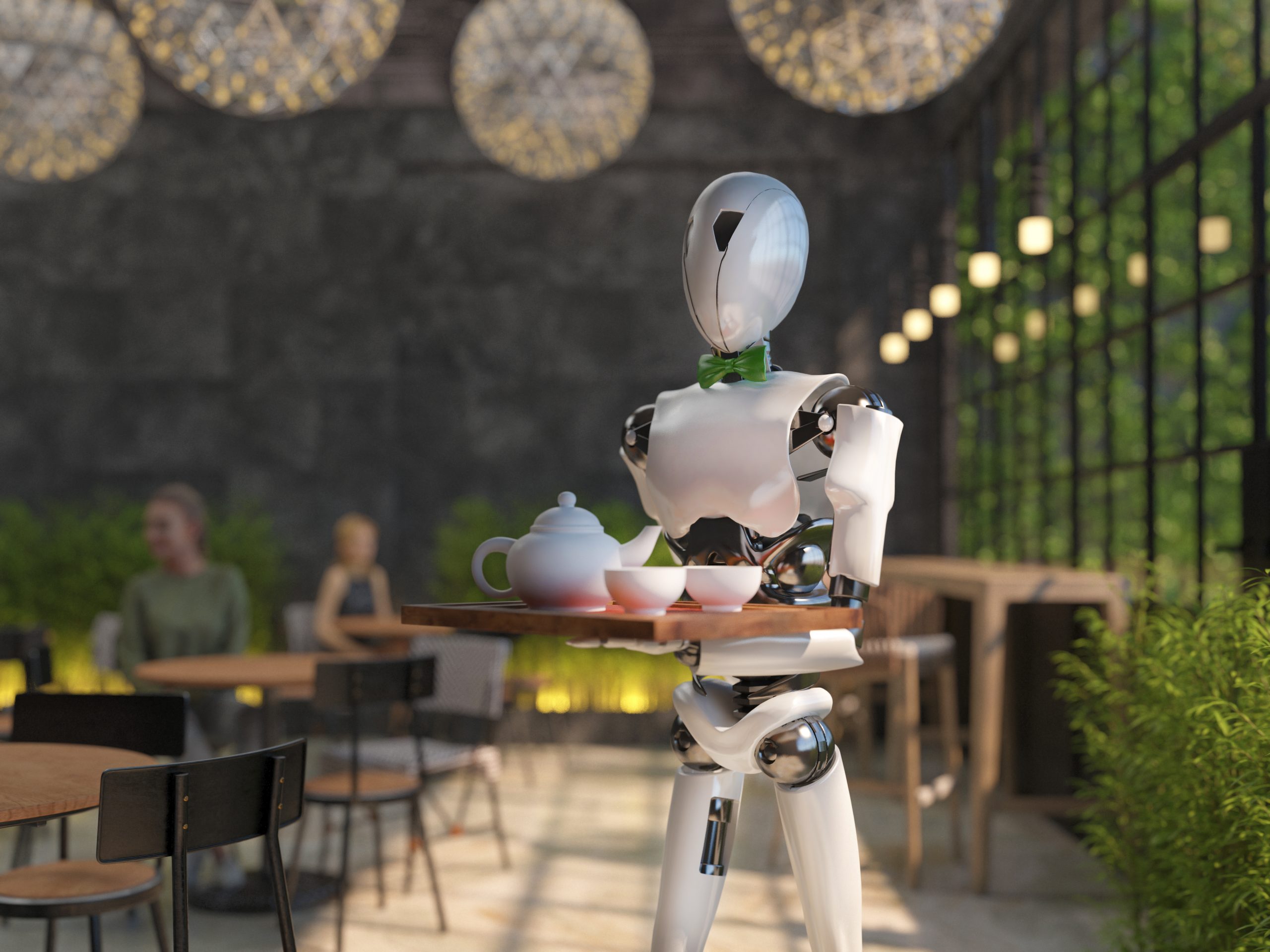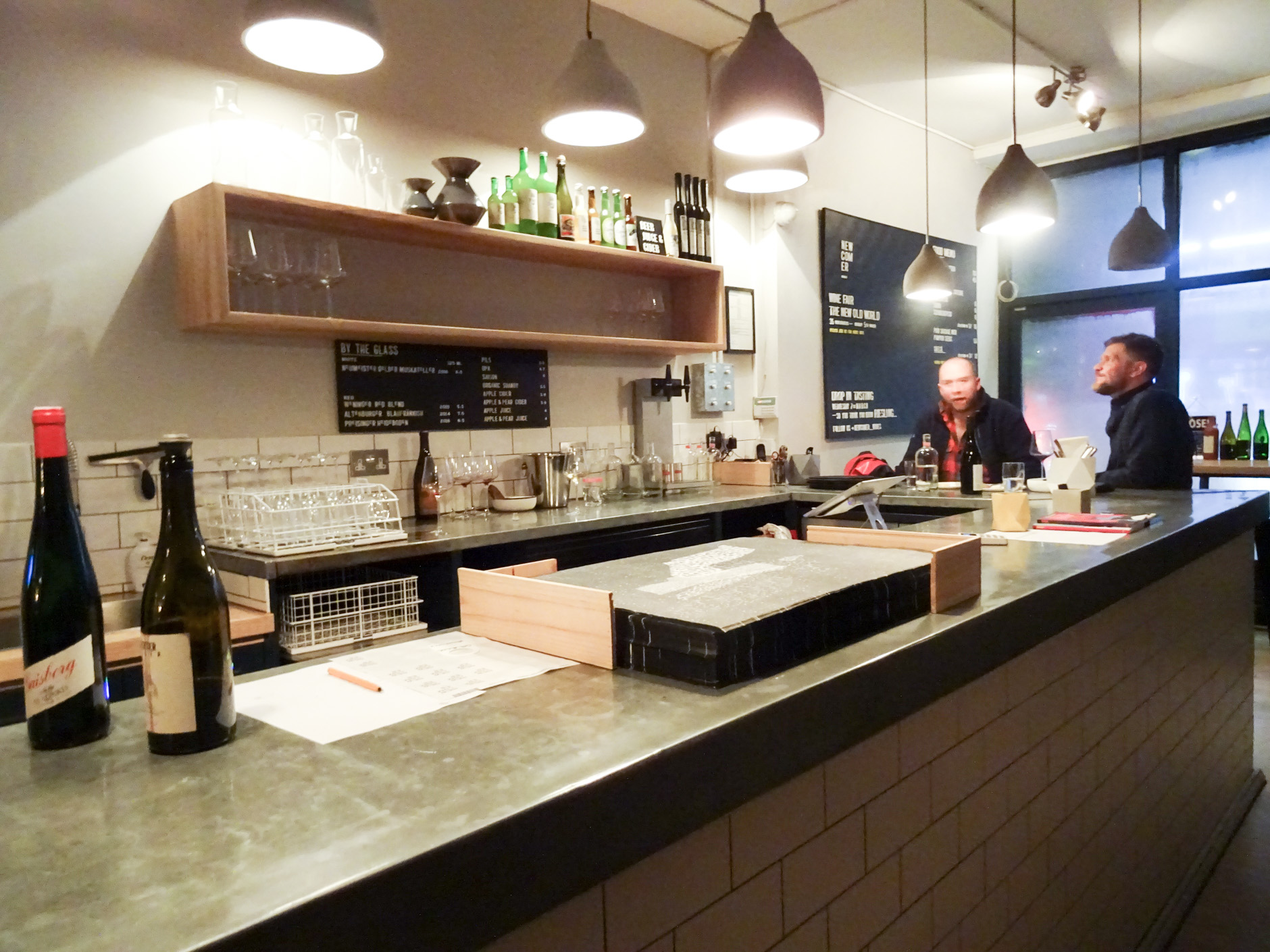A good bar no longer satisfies the modern, insatiable, attention-span-starved spirit. A refined drink from a well-curated menu just won’t make the social media-frenzy cut. A bar must offer more.
More can come in the form of competition: behold the rise of the darts-throwing bar, the retro-arcade bar, the indoor-cricket bar.
More can also be disguised as less. No menu. Bare stools. Concrete walls. Tell the bartender what you like and be surprised or horrified they’ve managed to capture your entire personality in a glass. Menu-less, at-the-mercy-of-the-grumpy-man-behind-the-counter bars are all the rage in Japan, so expect UK drinkers to be losing their minds over them in 18 months.
Or more can be found (or not) in the hunt for the hidden bar. These spots gamify one of the most boring parts of a bar: the moments before you actually arrive. Most are hidden just enough to deliver satisfaction and a sense of exclusivity before you’ve even glanced at the menu. You, o wise one, know just which buttons to press on the fake phone booth’s keypad to open the secret hatch. Which bell to ring beside an unmarked door. Which lift to take to which floor to wait, locking eyes with others, anticipating the opening into another, boozier realm. You are not fooled by the frontage of a clothes shop or a ramen joint. You know the secret. That feeling of insider knowledge, no matter how widespread online, is headier than any drink. No wonder speakeasy-style bars have conquered the drinks market in every corner of the globe. Who can resist a few minutes of feeling like Sherlock Holmes? The reward, a few sharp sips in a martini glass and a flooding of messages: ‘omg where are you?!X’.
There’s a difference between a fun treasure hunt and half an hour of wandering round a dark car park in a foreign city, knowing it’s been a century since such secrecy was necessary
In 1920s prohibition America, it was necessary for drinking establishments to hide behind shopfronts and in basements to avoid the government’s gaze. The speakeasy was born; a place to drink in luxury when everything else was dry — provided you said the right name at the door or knew which book to pull. They had to be hidden enough that police wouldn’t spot them, but not so much the spirits glumly gathered dust.
Fast forward to 2025 and the astute among you have realised we no longer live under prohibition. Morally-bankrupt Brewdog flows, Negronis come in lukewarm train tinnies and you can even get a glass of wine in Pret. Yet the speakeasy is more popular than ever, because finding a ‘secret’ bar is fun. Until it’s not.
San José, Costa Rica, is not much of a destination. It’s a pass-through place for those travelling to the wildlife-rich jungles and beaches of central America, but pass through my partner and I must, for it has an airport and a bustling bus station. It’s also home to D-Bar, which alludes to its nature on Instagram: “No signs. No names. Back in the Prohibition era, you didn’t just walk in. You waited. You earned it.”
And so we pile into an Uber. Destination? A shopping mall. Reservation at 6.15pm, we arrive fifteen minutes early. We traverse the ground floor, past worn-out shoppers and overdressed teenagers grinding popcorn into the cinema carpet. We know we need the car park and the letter D. We enter on the ground floor: E. We ascend a floor: B. No in-between. We must be missing something. With only Google Maps offering a vague location, we dodge cars, climb stairs, hit lift buttons and ask bewildered locals in broken Spanglish. Nothing. A security guard shrugs. After 25 minutes of hunting, any sense of fun has worn off. We’re about to give up when another guard arrives on an electric scooter. Vamos! He leads us round a corner, up a ramp. We’re handed over to another guard, then another, before finally being beckoned toward an unmarked door. We press the bell and wait. Five more minutes. When at last we sit down and receive menus, we realise: we are the only ones there.
D-Bar might have redeemed itself if the drinks had been good. But we’re back in the car park just 25 minutes later, bitter and rushing for a dinner reservation.
On our travels we’ve seen many speakeasies. In Hong Kong, the newly opened Holywell’s — coffee shop by day, bar by night — required three knocks on a nondescript yellow door to enter a room complete with armchairs, a fireplace and a cold glass of Club Orange. Cosy, nostalgic, exclusive — like genuinely being invited into someone’s home — with instructions for entry helpfully posted on Instagram.
In Montreal, Cold Room was a classic case of: find the door, gaze hopefully into a camera, wait to be let in. The drinks were nothing to write home about, but I enjoyed the separate exit, as though to deter followers.
Tokyo’s SG Low treads the line. We went into the wrong bar before being redirected by fed-up staff to the right one, all after finding our way to the second floor of an old office block. Once inside, inventive izakaya dishes and an endless list of sours soon melted away any memory of arguing over lift buttons.
At an Alice in Wonderland-themed bar in Seoul, they haven’t hidden the bar itself but the toilets, behind a wood-panelled door that looks part of the wall. I’ll spare you the details.
Speakeasy-style bars are now a global phenomenon, and for good reason. But they have gone too far. There’s a difference between a fun treasure hunt and half an hour of wandering round a dark car park in a foreign city, knowing it’s been a century since such secrecy was necessary. If a treasure hunt is really such an essential part of the brand, then at least leave some clues – because there’s nothing fun about desperately needing a wee or having to Google-translate “hidden bar” on patchy wifi. It’s almost enough to send you to the nearest Wetherspoons.
Cover photo licensed by Adobe for editorial use. All inset photos by Meg Houghton-Gilmour.
November 2025

